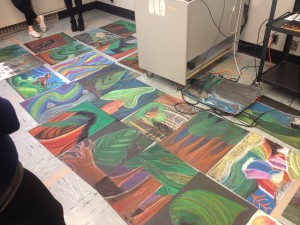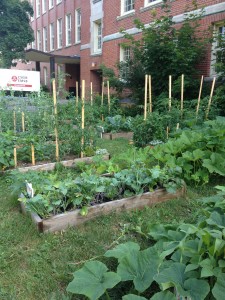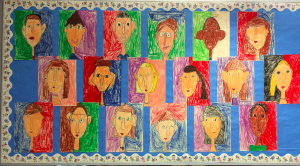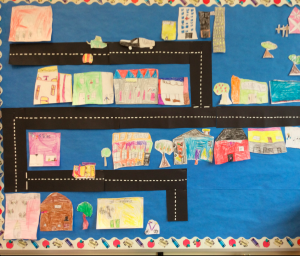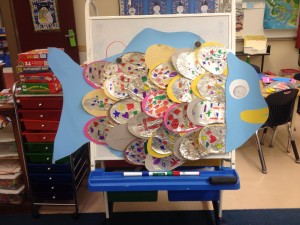I think that fostering a growth mindset, and providing opportunities for place based, and meaningful learning are central to my budding teaching philosophy. As I mentioned in the philosophy section of my blog, I think that bridging theory with action is important, but I found that I sometimes struggled to create the links as I start teaching, and juggling the many tasks that a teacher must manage.
Here are a few artifacts that I think help flesh out my teacher pedagogy.
During our art class, our teacher endeavoured to teach us to notice and appreciate an aspect of each individuals work, and to think of oneself as a learner, filled with potential. We created many projects during that class, using various materials and engaging different subject matter. With each project, our instructor was encouraging, and enthused. When I engaged with students during lessons, I communicated that same positive point of view when looking at their work, while engaging them in thinking about what they could do better. I think that placing an emphasis on the process of learning, as well as fostering a growth mindset is essential when communicating with students. I tried to foster this by asking questions like: What do you understand? What do you like about this drawing? What did you learn in that book?
Creating place based, hands on learning opportunities for children is a practice that I value highly! During my practicum, I had the opportunity to teach the French Immersion Grade One Science Plant Unit during which I had the children thinking about plants in their immediate environment through observation of the trees and plants in our backyard, and to grow their own seeds to understand more fully the needs of a plant. The creation of a school yard garden in Montreal where we taught children about plants, about soil and built the planter beds with them, was a really exciting adventure for both myself, my two co-workers and the children in the after-school day camp.
During our community unit, we started by thinking about ourselves, and what made us special. Then we thought about how this made our classroom a special community, and then our school. My most successful lessons during that unit were those in which the kids were engaging with each other, or with a task that required some detective skill, or sense of observation. In one lesson, we deduced what the birds eye view for the classroom would look like by first practising by looking at an amusement park. Our community map was a vocabulary revision exercise for our class, and we had lots of fun drawing and placing the buildings on the board to create a community. We then went over the various types of buildings while acknowledging each student’s work. Due to the short time I spent in the school, I did not create enough links with the parents and the other staff in order to have them come in and talking about their roles in the community.
Another successful lesson was one in which I read the Marcus Pfister book Arc-en Ciel. As a class we created a fish with each student creating a scale. As we were looking at the fish each student wanted to share their own work, we had an impromptu teachable moment in which to practise the french sentence structure for “that’s mine!”. I loved that lesson as the kids really engaged with the story and took the book out of the library to ‘read’ again on their own. This proved to me that the children engaged with the material in a meaningful way, and proved to me the importance of selecting books and activities that created enthusiasm! Creating opportunities for the student to create meaning, and interact with texts and stories in multimodal ways makes the tough work of early french immersion more fun for the students!
